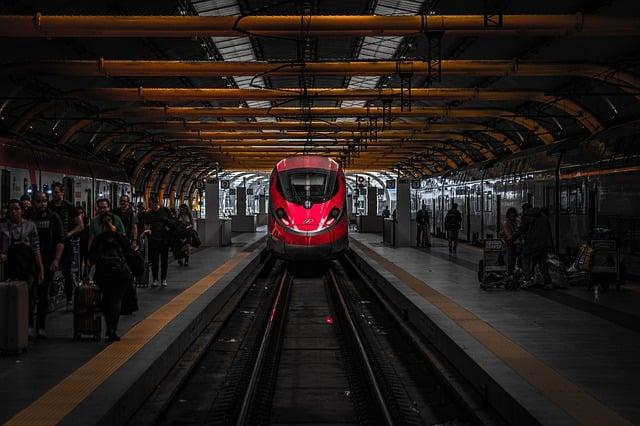In the realm of dystopian cinema, “Snowpiercer” stands out not only for its gripping narrative and striking visuals but also for its profound social commentary. Set aboard a perpetually moving train that houses the remnants of humanity after a cataclysmic event, the film serves as a microcosm of society, meticulously exploring themes of class struggle and social inequality. Through its layered storytelling and symbolic imagery, “Snowpiercer” invites viewers to reflect on the entrenched hierarchies and systemic injustices that pervade our world. This article delves into the hidden social commentary embedded within the film, unraveling the complex dynamics of power and resistance that unfold on this relentless journey.
Examining Class Divisions: The Train as a Microcosm of Society
Within the claustrophobic confines of Snowpiercer, the train’s rigid structure mirrors the societal stratification that persists outside its steel walls. Each carriage represents a distinct social class, with the elite luxuriating at the front and the oppressed masses relegated to the squalid tail. This division is not merely physical but deeply symbolic, reflecting the entrenched hierarchies that dictate power and privilege in the real world. The train’s linear design forces its inhabitants into a narrow hierarchy, where the distance between carriages becomes a metaphor for the chasm between social classes.
Key aspects of this microcosm include:
- Resource Allocation: The train’s resources are distributed unequally, with the front receiving abundant food and comfort, while the tail endures scarcity and deprivation.
- Social Mobility: Movement between carriages is strictly controlled, highlighting the barriers to upward mobility and the rigidity of social structures.
- Power Dynamics: Authority figures maintain control through force and manipulation, underscoring the oppressive systems that uphold class divisions.
By examining these elements, Snowpiercer becomes a poignant allegory for societal inequality, challenging viewers to reflect on the pervasive nature of class struggles in their own lives.

The Role of Resource Control and Power Dynamics in Snowpiercer
Within the confines of the train, resource control becomes a critical mechanism for maintaining power. The elite at the front of the train enjoy an abundance of luxuries, while the tail-end passengers grapple with scarcity and deprivation. This stark contrast is not merely about wealth disparity but underscores the manipulation of resources to sustain a rigid hierarchy. The elite’s access to amenities and food highlights their dominance, while the tail section’s struggle for basic survival reinforces their subjugation.
- Scarcity as a tool: The deliberate restriction of resources ensures compliance and suppresses rebellion among the lower classes.
- Perpetuation of inequality: By controlling the flow of necessities, the ruling class maintains a cycle of dependence and powerlessness.
Power dynamics within the train are emblematic of larger societal structures. The train’s engine symbolizes the heart of authority, with its operator wielding control over life and death. This centralized power reflects the monopolization of decision-making processes, where the elite dictate the conditions under which others live. The tail-end revolt becomes an inevitable response to this imbalance, illustrating the tension between authority and the oppressed’s quest for equity.

Symbolism and Allegory: Understanding the Trains Societal Structure
The train in Snowpiercer serves as a potent symbol and allegory for societal hierarchies and the rigidity of class structures. The physical layout of the train, with its strictly compartmentalized sections, mirrors the stratification of society. Each car represents a different social class, from the opulent front cars, inhabited by the elite, to the impoverished tail section, where the lower classes struggle for survival. This structure highlights the stark disparities in wealth and privilege, and how such divisions are maintained and enforced through both systemic oppression and physical barriers.
- Wealth and Privilege: The front cars are a microcosm of luxury and excess, symbolizing the insulated world of the rich.
- Oppression and Struggle: The tail section embodies the harsh realities of poverty, with its inhabitants living in squalor and constantly fighting for basic necessities.
- Revolution and Change: The journey from the back to the front of the train represents a rebellion against entrenched systems, a quest for equality and justice.
Through this allegorical setting, the film critiques the inherent inequalities of modern society, urging viewers to reflect on the moral and ethical implications of such a rigid class system. The train becomes a microcosm of a world where upward mobility is a violent struggle, and the status quo is maintained through fear and manipulation.

Lessons and Reflections: Applying Snowpiercers Themes to Modern Issues
In examining the societal layers within Snowpiercer, we can draw parallels to modern issues such as economic disparity and social mobility. The train’s rigid class system is a microcosm of our world, where the wealthy enjoy privileges while the impoverished struggle for survival. This stark division is reminiscent of contemporary debates surrounding wealth inequality and the concentration of power.
- Economic Inequality: Just as the train’s carriages symbolize different social strata, our society often sees resources and opportunities disproportionately distributed.
- Social Mobility: The struggle to move from the tail to the front mirrors the challenges faced by many in climbing the socioeconomic ladder today.
- Resistance and Change: The revolt led by the lower classes highlights the potential for collective action to address systemic injustices.
By reflecting on these themes, Snowpiercer serves as a compelling narrative urging us to question and address the inequities that persist in our world.































